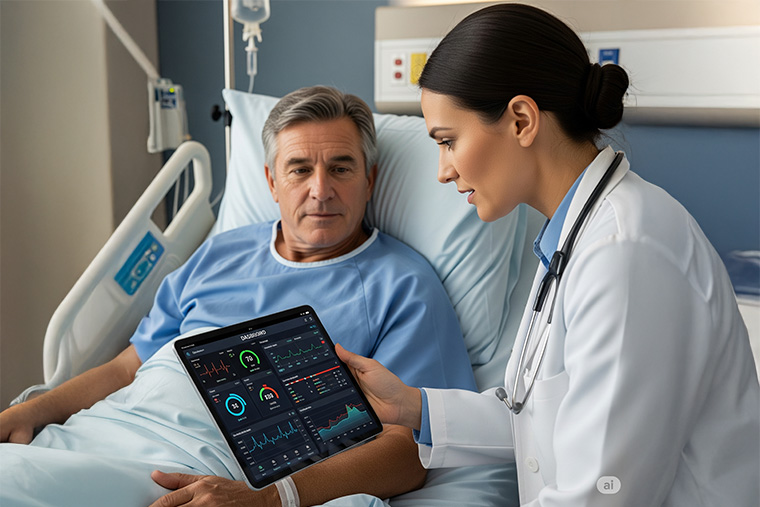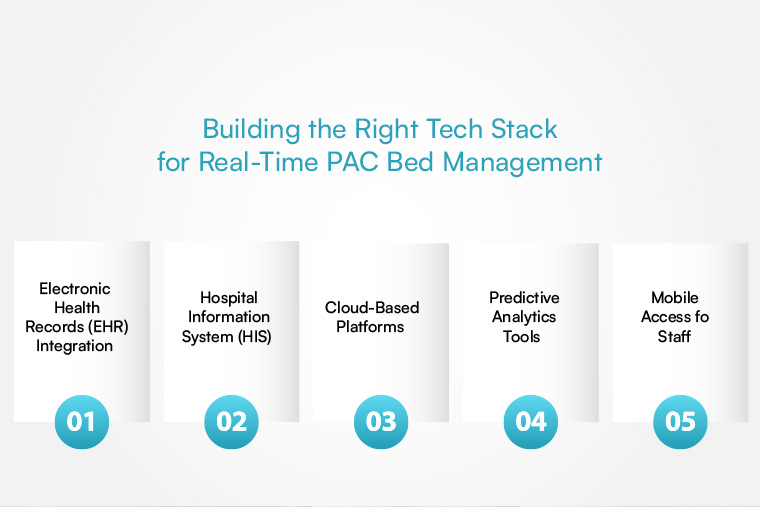1. Introduction: The Growing Need for Efficient PAC Bed Management
The healthcare industry has always faced challenges related to bed management, but with the increasing demands on post-acute care (PAC) services, this issue has become even more pressing. Hospitals are under significant pressure to manage their inpatient beds efficiently, especially when it comes to post-acute care. With an aging population and growing numbers of patients transitioning to post-acute care settings, managing PAC bed availability has never been more critical.
Hospitals need a streamlined process to track the availability of these beds in real time to ensure patients receive the care they need without delays. This is where real-time PAC bed availability dashboards come into play—empowering hospital staff with up-to-date information to make faster, more informed decisions.
In this blog, we’ll explore how real-time PAC bed availability dashboards are transforming hospital operations, the key challenges they help solve, and how hospitals can build the right tech stack to optimize bed management.
2. The Challenges of PAC Bed Availability in Hospitals

Managing PAC beds in a hospital is a complex task. PAC units, which provide care for patients who no longer require intensive hospital care but still need specialized services, play a pivotal role in patient care continuity. However, hospitals often face several challenges in managing these beds effectively:
2.1 Bed Occupancy and Turnover
The high demand for PAC beds can lead to frequent issues with bed turnover. Hospitals may struggle to predict when a bed will become available, especially when patients are discharged or transferred to long-term care facilities. Without accurate, real-time information, hospital staff might find themselves overbooking beds or delaying patient discharges, resulting in bottlenecks and inefficiencies.
2.2 Lack of Real-Time Visibility
Without a clear, up-to-date view of bed availability, hospital administrators and care teams can make decisions based on outdated information. This leads to inefficiencies in coordinating admissions, transfers, and discharges. The absence of real-time data also makes it harder to manage emergencies or unexpected surges in patient volume.
2.3 Coordination Between Departments
Effective coordination between departments—such as emergency rooms, inpatient units, and PAC units—is essential for efficient bed management. However, many hospitals lack integrated systems to share real-time information across teams, leading to miscommunication, delayed responses, and poor patient outcomes.
2.4 Patient Flow Optimization
Hospitals often struggle with optimizing patient flow from one department to another, especially when dealing with PAC beds. Without an integrated system for tracking patient movement across units, hospitals may find themselves overburdened with patients waiting for PAC beds or underutilizing available spaces, impacting overall hospital efficiency.
3. Real-Time PAC Bed Dashboards: How They Work—and Why They Matter

Real-time PAC bed dashboards give hospitals a single source of truth for bed status, patient flow, and upcoming discharges. By coupling live data with predictive analytics and clear visual cues, they turn fragmented information into actionable insight—driving smoother operations and better care.
3.1 Unified, Live View with Smart Alerts
Dashboards pull occupancy data from EHRs, patient-flow systems, and admission records, then refresh it instantly. Staff can see at a glance:
- Current availability – which PAC beds are occupied or free
- Pending transfers – who is waiting to move and to which unit
- Estimated discharge times – when each bed should open up
Configurable alerts flag sudden changes (a discharge delay or an unexpected opening), so teams can act before bottlenecks build.
Benefit: Shorter wait times, fewer overbooked beds, and quicker decision-making.
3.2 Predictive Analytics for Proactive Planning
Historical trends, seasonality, and real-time census data feed forecasting models that predict near-term occupancy levels. Administrators can:
- Pre-allocate staff and equipment for expected surges
- Schedule elective procedures around peak PAC demand
- Plan patient discharges confidently, reducing last-minute scrambles
Benefit: Smoother patient flow, reduced readmission risk, and more predictable staffing costs.
3.3 Cross-Department Coordination in One Place
Because the same live dashboard is visible to ED teams, inpatient wards, care managers, and PAC units, everyone stays on the same page. A nurse discharging a medical-surgical patient, for example, can instantly see whether a PAC bed is free and trigger transport without hunting for updates.
Benefit: Faster transfers, clearer communication, and less time spent on phone calls or emails.
3.4 Bottom-Line Gains for Hospitals and Patients
Bringing all of the above together yields measurable advantages:

In short, a well-built real-time PAC bed dashboard does more than show numbers on a screen—it becomes the command center for post-acute care coordination, translating live data into faster throughput, safer discharges, and a healthier bottom line.
4. Building the Right Tech Stack for Real-Time PAC Bed Management

To fully realize the benefits of real-time PAC bed availability dashboards, hospitals must have the right tech stack in place. This stack should integrate various technologies and data sources to create a seamless, unified experience for healthcare providers. Below are the key components needed:
4.1 Electronic Health Records (EHR) Integration
A robust EHR system is the foundation for building a comprehensive PAC bed availability dashboard. Integrating EHRs ensures that patient data, such as discharge times, medical histories, and care requirements, is directly linked to bed management. This integration allows the dashboard to provide accurate, real-time data and make intelligent recommendations based on patient needs.
4.2 Hospital Information System (HIS)
An effective Hospital Information System (HIS) can help aggregate data from various departments (including patient flow, admissions, and transfers) and feed it into the PAC bed dashboard. With HIS integration, hospitals can ensure that bed availability data is up-to-date, even during high patient turnover.
4.3 Cloud-Based Platforms
Cloud-based platforms provide the flexibility and scalability required for real-time bed management. With cloud technology, hospital administrators and care teams can access PAC bed availability data from anywhere, even remotely, ensuring that decisions can be made quickly, no matter where the team members are located.
4.4 Predictive Analytics Tools
Incorporating predictive analytics tools helps hospital staff anticipate demand and optimize bed availability. These tools use historical data, patient trends, and predictive modeling to forecast future needs, allowing hospitals to allocate resources more efficiently.
4.5 Mobile Access for Staff
Hospitals can further enhance real-time PAC bed management by integrating mobile access into their dashboards. By providing care teams with mobile-friendly platforms, staff can stay updated on bed availability and patient status while on the move. This increases responsiveness and reduces delays in decision-making.
5. Conclusion: Enhancing Hospital Efficiency with the Right Tech Stack
Real-time PAC bed availability dashboards are essential tools for hospitals aiming to improve their operational efficiency, enhance patient care, and streamline post-acute care management. By integrating real-time data, predictive analytics, and advanced communication tools, these dashboards enable hospitals to make informed decisions and improve overall bed management practices.
Building the right tech stack—comprising EHR integration, cloud-based platforms, predictive analytics, and mobile access—can help hospitals optimize their PAC bed management system. Hospitals that adopt this technology will be better equipped to handle high patient volumes, improve patient flow, and reduce delays, all of which are critical for providing high-quality care.
At Cabot Technology Solutions, we specialize in building integrated healthcare solutions that enhance hospital operations and improve patient outcomes. If your hospital is ready to take control of PAC bed availability and optimize patient flow, contact us today to learn more about our solutions.
Are you ready to optimize your PAC bed management system with real-time dashboards? Contact Cabot Technology Solutions today to discover how our healthcare solutions can help your hospital improve operational efficiency, enhance patient care, and ensure better bed availability coordination.

